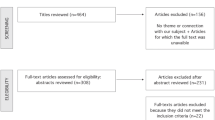Abstract
The paper discusses the principle by which we reason to what is ‘true in fiction’. The focus is David Lewis's article ‘Truth in Fiction’ (1978) which proposes an analysis in terms of counterfactuals and possible worlds. It is argued thatLewis's account is inadequate in detail and also in principle in that it conflicts radically with basic and familiar tenets of literary criticism. Literary critical reasoning about fiction concerns not the discovery of facts in possible worlds but the recovery of meanings in interpretative frameworks. The model theoretic approach fails to account for common literary or rhetorical devices like unreliable narration, connotation and point of view. And in explaining indeterminacy of content in terms of truth-value gaps it gives too simplistic an account of critical reasoning about character motivation and thematic development. A more adequate account of content-indeterminacy can be provided through a comparison of the interpretation of fiction with the interpretation of human action. A broader motif in the paper is the underlying tension between what is required for the logic of fiction and what is required for the aesthetics of fiction.
Similar content being viewed by others
References
Davidson, D.: 1976, ‘Mental Events’, in L. Foster and J. W. Swanson (eds.), Experience and Theory, Luckworth, London.
Dworkin, R.: 1986, Law's Empire, Fontana Press, London.
Iser, W.: 1974, The Implied Reader: Patterns in Communication in Prose Fiction from Bunyan to Beckett, John Hopkins University Press, Baltimore.
Jones, P.: 1975, Philosophy and the Novel, Oxford University Press, Oxford.
Knights, L. C.: 1946, ‘How Many Children Had Lady Macbeth?’, in L. C. Knights, Explorations, Penguin Harmondsworth.
Lamarque, P. V.: 1978, ‘Truth and Art in Iris Mudroch's The Black Prince’, Philosophy and Literature 2, 209–222.
Lamarque, P. V.: 1987, ‘The Puzzle of the Flash Stockman: A Reply to David Lewis’, Analysis 47, 93–95.
Lamarque, P. V.: 1989, ‘Narrative and Invention: THe limits of Fictionality’, in C. Nash (ed.), Nararative in Culture, Routledge, London.
Lamarque, P. V.: forthcoming, ‘Make-Believe, Ontology and Point of View’, Proceedings of the XI World Congress of Aesthetics.
Lewis, David: 1978, ‘Truth in Fiction’, American Philosophical Quarterly 15, 37–46.
Lewis, David: 1983, Philosophical Papers, University Press, Oxford, Volume 1.
Olsen, S. H.: 1978, The Structure of Literary Understanding, Cambridge University Press, Cambridge.
Walton, K.: 1976, ‘Points of View in Narrative and Depictive Representation’, Nous 10, 49–61.
Author information
Authors and Affiliations
Rights and permissions
About this article
Cite this article
Lamarque, P. Reasoning to what is true in fiction. Argumentation 4, 333–346 (1990). https://doi.org/10.1007/BF00173970
Issue Date:
DOI: https://doi.org/10.1007/BF00173970




